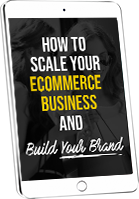
Being a “control-freak” is not something most people aspire to. I don’t think I’ve witnessed a time when someone used it as a compliment. But I’d like to offer up the term as a verb and would suggest that it is a necessary way to manage your business. (Without the annoying part…)
When you control-freak your business, you recognize that that no one cares as much about your business as you do. Even if you work with great partners and vendors (which you should be regardless). You or someone on your team, will, and must, do some of the work that you would expect a vendor to, even if it’s redundant. (By the way, I’m friends with many of my vendors, so this is not a knock on them. It’s based on the reality that no one thinks about your business the same way you do.)
I’m not suggesting you go out and build a fulfillment center. But I am saying that you dig in deep to how your partners operate. Which means visiting their offices, asking deep and probing questions, and running your own analyses. “Isn’t that the job of the vendor and why I’ve hired them?” Yes. That is correct. But no business runs perfectly yours included). If you aren’t making your partners better, then you and your team aren’t working hard enough to improve their, and your, business.
Control-freaking your business means never accepting something, good or bad, at face value. Clear, fact-based information needs to inform your decisions. As opposed to someone’s opinions. Beware especially of folks who speak with confidence but don’t ever have facts to support their statements. They can be the most dangerous and costly of all.
This sounds less efficient than the alternative. But whatever efficiency you think you have by not doing so, you’ll actually giving up on the bottom line. Not pressing hard leads to mistakes, lack of optimization, or just a general sense of apathy. The upside is that over time, everyone raises their game. If that doesn’t happen, then you’re not asking the right questions or not pressing hard enough.
At the same time, your partners should recognize that you have made their business better. Since your hard work is benefiting their other clients and their own bottom line. And if you encounter partners who don’t like to be challenged, find another one. You deserve to work with people who are obsessed with improving their business. Regardless of where it comes from.
Final point here. This may sound like a “don’t trust anybody” or “be a jerk at all costs” philosophy. Nothing could be further from the truth. These are your partners; control-freaking doesn’t mean you treat them disrespectfully. But it does mean you don’t relinquish the reins of your business to someone else.
This is what it means to control-freak your business. If you want to achieve extraordinary results, I can’t see another way to do so.
Please leave a comment below because I’d like to hear what you think.




